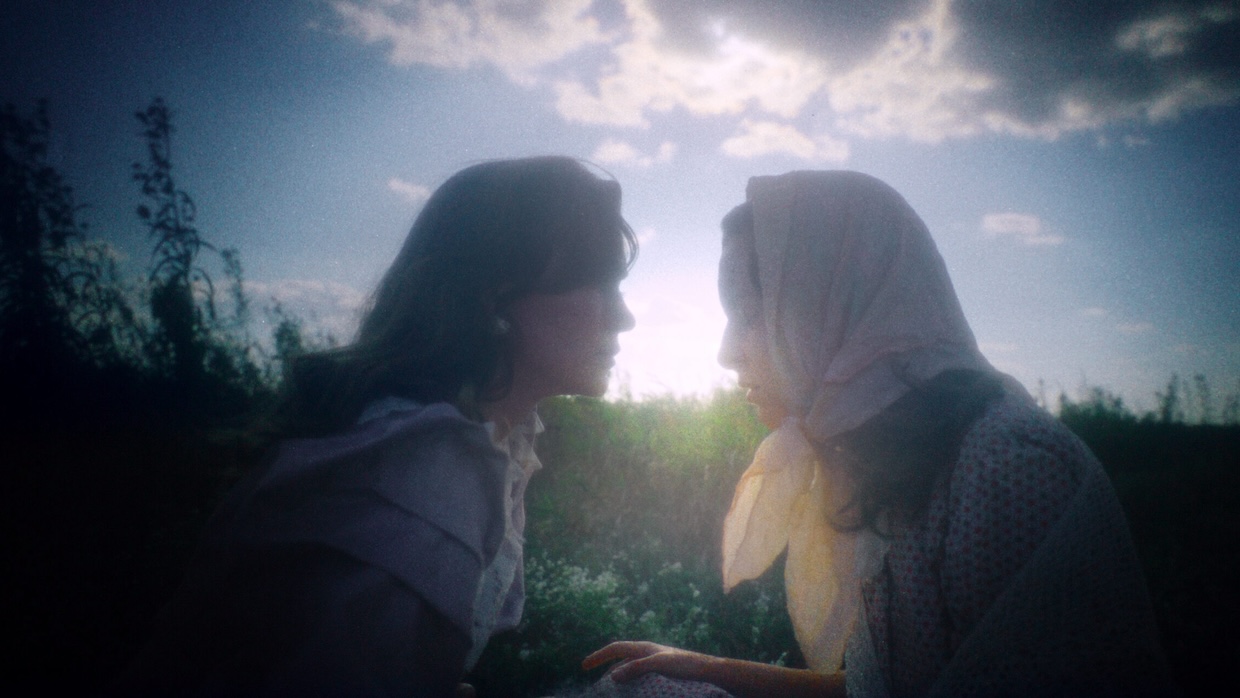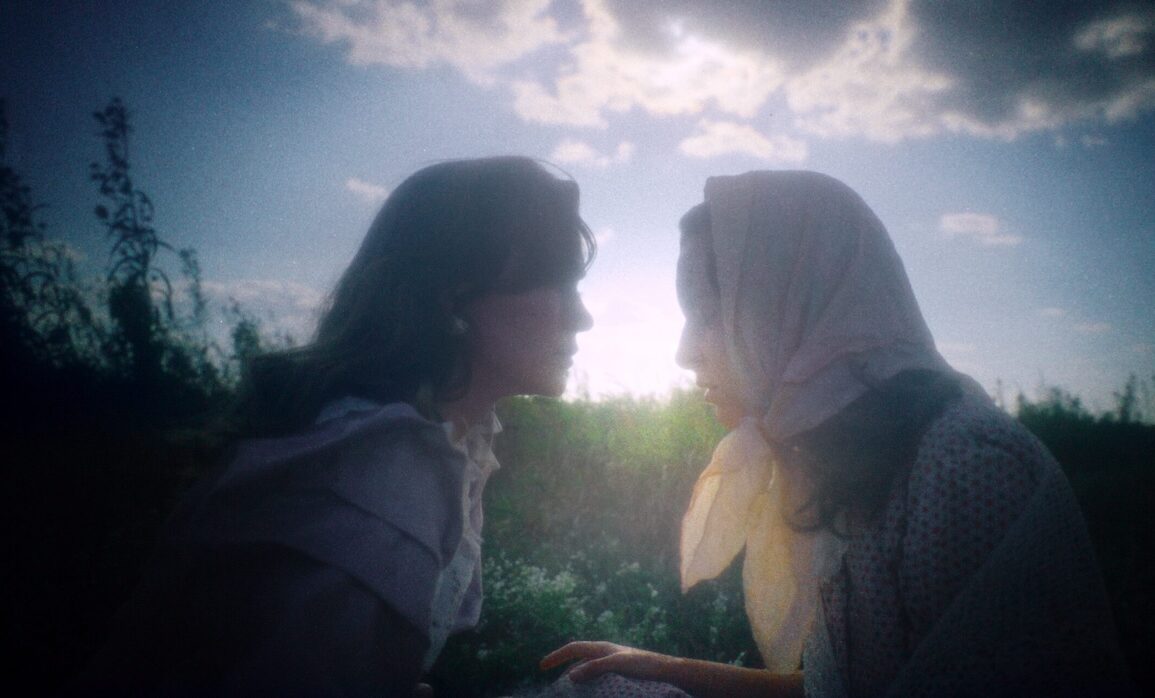
Introducing Time of the Heathen on day two of the inaugural FILM FEST KNOX, artistic director Darren Hughes teased that “75 minutes from now, you will be among the hundreds—or perhaps thousands—who have seen this movie.” Access to something otherwise difficult to view is at least part of the premise for any film festival; in the case of 1961’s Heathen, Hughes noted that this might be not just the North American premiere of the restoration (following Il Cinema Ritrovato) but possibly of the film itself. Despite its very regional American origins (the performance of Milton Babbitt protege Lejaren A. Hiller Jr.’s score is credited to the University of Illinois Wind Ensemble), Heathen may never have actually shown in the US after receiving a brief release in the UK and on European television. Now here it was, in auditorium two of the Regal Riviera in downtown Knoxville.
Founded by Keith McDaniel, the Knoxville Film Festival operated from 2004 until 2022. FILM FEST KNOX is its successor, co-founded by Hughes, a friend and contributor who asked early in its development if I wanted to come check it out; because I am always up for a free trip out of town, I was happy to. Beyond the novelty of visiting a new city, I’ve never been around for year one of a festival. During FILM FEST KNOX’s smoothly executed first edition, 25 features or shorts programs screened on two nice screens over four days at the Regal Riviera, with 15 out-of-town guests attending (two press, the rest jury members and filmmakers). Local filmmakers were highlighted in the Made in Tennessee section as well as two Elev8tor programs of eight-minute proof-of-concept shorts. One prong of emphasis was Knoxville’s desire to attract film production, with Visit Knoxville representatives Kim Bumpas and Curt Willis proactively meeting visiting filmmakers to stress their availability and desire to help them connect with resources.
Those guest filmmakers were selected as part of the American Regional Film competition—six independent features that, to be chosen, had to be shot somewhere other than New York or Los Angeles, a refreshing change of pace. The initial press release carefully noted the location of each, including Bob Byington’s Austin-shot Lousy Carter (which I wrote about at Locarno), Gary Huggins’s decade-to-complete Kick Me (repping Kansas City, Kansas) and Steven Kanter and Henry Loevner’s section winner Peak Season (shot in Jackson Hole, Wyoming). I was in a shuttle to the airport with the latter pair, who were still seeking distribution for their SXSW-premiering film, when they got a call from Bumpas that they might want to turn around and head back for the awards ceremony, making for a fun end to my visit. Their prize will be an Academy-qualifying run via Regal, which in 2024 is defined as an “expanded theatrical run of seven days, consecutive or non-consecutive, in 10 of the top 50 U.S. markets, no later than 45 days after the initial release in 2024″—especially as things stand in independent distribution currently, a top-percentile commitment from a theater chain that was founded (and is still headquartered) in Knoxville.
As Hughes noted, the six regional selections represented six different genres; of these, Graham Swon’s An Evening Song (for three voices) (filmed in Bentonsport and Fairfield, Iowa) definitely stood in for “difficult arthouse festival film.” Swon’s profile is higher as a producer—recently on Joanna Arnow’s The Feeling That the Time for Doing Something has Passed and, further back, on Matias Piñeiro’s Hermia & Helena. During my set visit for that film, he mentioned that “We’ve talked a lot about the production style of Rohmer and Hong Sang-soo—very small crews, low budgets, productions that don’t require you to go a lot of places or get special effects or set pieces or costumes. If you can work within those constraints, you can have a lot of aesthetic freedom in what you do.” The multi-variable resource math of An Evening Song reduces the number of performers (three total, per the title), thus making budgetary room for supporting production value from period costumes and burn make-up for Deragh Campbell as servant Martha. The late reveal of her ravaged skin is as impactful for the clearly elaborate efforts required to make her appear that way as it is an effective way of using body to explicate character.
The love triangle of Martha, her employer Richard (Peter Vack) and his wife Barbara (Hannah Gross) do speak to each other on-camera, but just as often the film unfolds via a handoff series of voiceovers, and what particular resolution their romantic tensions will arrive at produces genuine uncertainty. The story is told in a hyper-literate shared voice steeped in the period syntax of early 20th century American literature. Beyond the love triangle, tension is also generated, seemingly not all of it intentional, between the plausibility of the literary pastiche (which would read just as well as it plays in recitation) and the unavoidable contemporaneity of the performers, whose voices, rhythms and even nail art constantly heighten the gap between the performative present and the linguistic past being conjured up.
That gap is likewise reflected in the film’s literal distance between lenses, with a normal digital sensor capturing images mediated by a four-by-five inch large format still photography lens. Even as seemingly every major production is using older lenses to add a little personality and aberrations to hyper-clean digital sensors, An Evening Song pushes that to an extreme going far beyond the perpetual smearing of mid-’90s Anton Corbijn videos; the images seem perpetually on the verge of dissolving into one another even when that isn’t actually happening. The hazily compelling results are abetted by Rachel Evans’s moody ambient score, the kind of warm sonic bath I can get a lot of work done to.
Peter Kass’s sole directorial effort, Time of the Heathen offers regional Americana of a much less theoretical kind, with John Heffernan as the shell-shocked, aptly credited “Gaunt.” The simple plot has Gaunt stumbling into the aftermath of a young white man inadvertently killing a black woman, her death foreshadowed by him telling her “I just want to help,” a trusty warning sign then as now. Gaunt runs away with the dead woman’s young mute brother, both fleeing from rifle-toting racist Link (Orville Steward). Heathen initially appears seems powered both by its resourceful, assertive use of foreground-background staging that sets characters in strong relief against each other, and its unambiguous but un-histrionic depiction of everyday white racism flourishing unchecked in the unintegrated, lightly patrolled heartland.
But the opening title card, oddly specific in its note that the events take place four years after the bomb dropped on Hiroshima, foreshadows where Heathen is heading—firmly labeling domestic racism and the mushroom cloud as two manifestations of the same tendency and collective sin. Heathen is attenuated even at 75 minutes, but its rediscovered resourcefulness proved especially timely. I kept thinking of an interview I saw of Rep. Jason Crow (D-CO), explaining patiently and at length to a visibly stupefied CNN anchor that after 20 years the US has definitively lost the War on Terror, and that Israel should learn from our experience—something that should be obvious, but apparently isn’t. In that respect, Time of the Heathen‘s intersectional diagnosis is right on schedule.
The biggest and most enthusiastic crowds, naturally, were for local filmmakers; the opposite of that were the seven people, myself included, who showed up for Angela Schanelec’s Music, my final screening before leaving town. Programmed as part of the International Currents section (the “festival of festivals” strand of FILM FEST KNOX), it was deeply satisfying to watch her latest in a multiplex space—just like being at TIFF’s Scotiabank theater, another technically superior space temporarily reappropriated for art films. While Schanelec’s work is narrative in more than a nominal sense, her commitment to extreme ellipses offers a version of “storytelling” that conforms to its general architecture while removing key components. She’s made it easy to learn before viewing that Music is a gloss on Oedipus Rex, a fairly generous key to understanding what might otherwise be confoundingly opaque and non-linear—there appear to be some chronological reversals along the way, but having a reference point means it’s not hard to keep a handle on the general series of events. (In that respect, the first three shots are potentially explicable as variations on having trouble seeing clearly: a shot from the top of a mountain looking down on lower hills, obscured and revealed by passing clouds; a nighttime shot of someone walking up one of them in such low light as to be barely legible; a daytime shot of someone scrambling up a hill, obscured when passing behind trees.)
Schanelec makes it tough to keep up in other ways, like the choice to have no dialogue for the first half-hour other than people’s names being said from time to time, an experiment in storytelling purely through bodies and motion. The performances are intensely naturalistic to the point of drabness-as-style, but also in a slightly indefinable heightened realm while being much less overtly Bressonian than previously. Music‘s first half is shot on Greece, often outdoors in sunlight, but the palette is as muted a rendition of sunny days on the beach as imaginable, tamping the easy pleasures of scenery. (The title, though, should be taken literally, with some fairly easy listening singer-songwriter moments along the way; as with Schanelec’s deployment of M. Ward in I Was at Home, But…, the gap between the severity of her narrative taste and the NPR Tiny Desk-ness of her musical inclinations tickles me.) There are, within this, moments where you can almost perceive a gesture towards overt beauty created by artifice; in one, a woman strips off her outerwear, getting down to her sports bra and underwear, before walking into the sea. The match between the color of her clothing and of the waves is too close to be coincidental, and I could have sworn I perceived a very slight uptick in the brightness of the sea to bring them home (two more clicks of cyan, as it were). I could have been projecting that in an attempt to unpack the image, but either way it speaks to the heightened states of attention Schanelec generates. Thus refreshed, I left FILM FEST KNOX earlier than I would have liked—i.e., prior to the U.S. premiere of a movie I’ve been waiting to hear since hearing great things about its Berlinale premiere, Martín Shanly’s About Thirty. Always leave them wanting more!
This post was originally published on this site be sure to check out more of their content.








